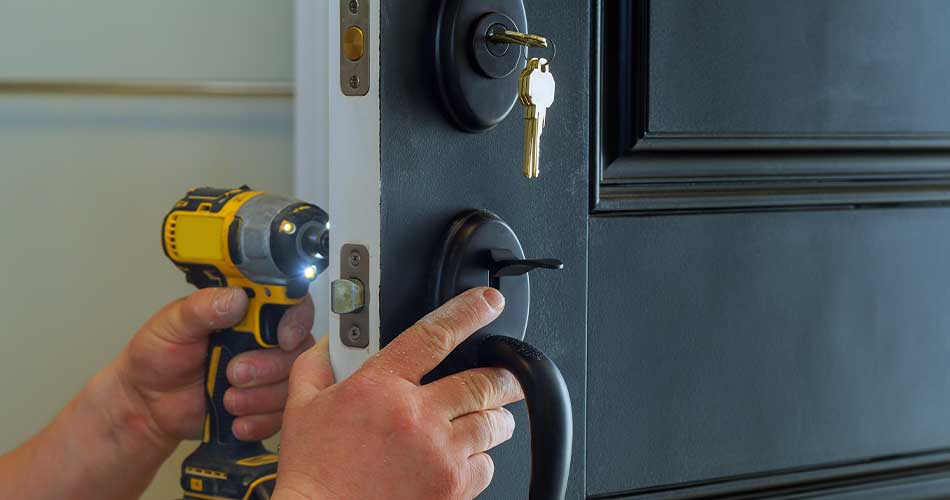By Mary Boone
If no new holes are needed in the door or door jamb, replacing a handset is a fairly straightforward, DIY job.
A properly locked door is your first line of defense against intruders. Of course, that defense is not very reliable if you’re not sure who has keys to those locks.
There are many reasons for changing a lock, including:
– You’ve just moved into your house.
– You’ve lost a key.
– Your house has been broken into.
– Your purse has been stolen, and your keys were in it.
– Your current lock is worn and temperamental.
– Your current lock is builder’s grade, and you want something more substantial.
– You want to be able to use the same key to open all the doors in your house.
– You’ve lost track of which contractors, service people and neighbors have keys to your house.
The difficulty of changing or replacing a lock varies from job to job. If no new holes are needed in the door or door jamb, replacing a handset is a fairly straightforward, DIY job.
Rekeying vs. replacing
If a new hole is needed, locksets come with a template that folds over the edge of the door and locates the hole center. Unfortunately, hole saws are not the most common household tool, and even if you do own one, it can be pretty difficult to line up the saw to go straight through the door without the slightest angling. You may want to hire a locksmith or contractor to tackle more complicated lock replacement projects.
If the lock itself is in good shape, it may be possible to rekey the lock instead of replacing it. Rekeying a lock is the process of changing the tumblers of a lock cylinder with tumblers of different sizes. When you rekey a lock, a new key, which coincides with the new tumblers, is needed to open the door.
A locksmith can rekey your locks for a significantly lower cost than full replacement of the lock. Or, if you’re handy, you can purchase a rekeying kit and do the job yourself. Rekeying kits are brand specific, so you’ll need a kit for each brand of lock used in your home. The kits come with two keys, detailed instructions and the tools needed to complete the job (you’ll also need a screwdriver and needle-nose pliers). It’s important to note that your old key is needed to take out the lock cylinder plug, and then the new key is used to rekey the lock. If you’ve lost your only keys to the lock, you’ll need to call a locksmith.
DIY options
If investing in rekeying kits and calling locksmiths is unappealing, you may want to check out some of the rekeyable locks now on the market. Kwikset and Schlage are among manufacturers selling these consumer-friendly systems.
Rekeyable locks come with two standard keys plus a reset key. When you insert the reset key, the pins inside go to a neutral or standby position and are then reset in a new configuration with new house keys from the same manufacturer.
The rekey feature typically costs only a few dollars more than a similar lock without it.

